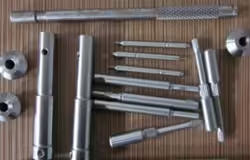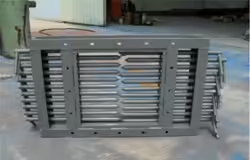
6 Proven Advantages of Rod Steel
Table of Contents
Introduction
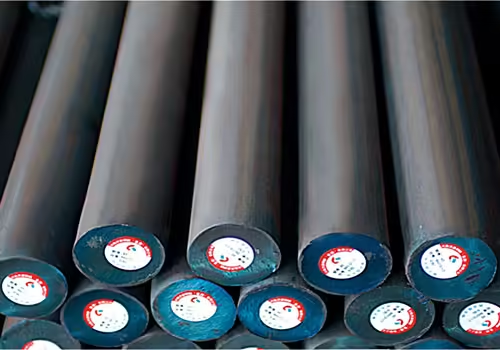
Rod steel is a fundamental material used across construction, manufacturing, and engineering industries. It comes in various sizes and grades, offering versatility and strength for multiple applications. With its cylindrical shape and structural integrity, rod steel plays an essential role in both foundational and finishing tasks. Whether it’s for reinforcing concrete or fabricating components, the demand for rod steel continues to grow globally.
This blog will explore six proven advantages of rod steel, highlighting why it remains a top choice for industry professionals. By understanding its benefits, users can make more informed purchasing and application decisions.
High Tensile Strength
A defining feature of this steel bar product is its remarkable tensile capacity. Depending on the grade, ultimate tensile strength can range from 400 MPa for mild bars to more than 800 MPa for micro‑alloyed and thermo‑mechanically treated variants such as ASTM A615 Grade 80. This strength derives from a refined ferrite–pearlite microstructure, sometimes enhanced by quench‑and‑self‑tempering (QST) processes that lock in additional hardness without sacrificing toughness.
For engineers, these numbers translate into slimmer, lighter load‑bearing members. A typical 32 mm diameter Grade 60 bar can carry more than 60 tonnes in pure tension—enough to anchor prestressed concrete girders or bridge hangers. Because strength increases faster than mass, designers can cut reinforcement tonnage by up to 15 % without reducing safety factors, lowering freight, handling, and erection costs.
Real‑world projects confirm the benefit. The Nanjing Third Yangtze Bridge shaved 1,200 t from its deck reinforcement by upgrading to high‑tensile steel, enabling longer spans and fewer piers. Similar savings are achieved in high‑rise shear walls, where reduced bar congestion accelerates concrete placement and improves vibration quality control.
Excellent Ductility for Seismic Performance
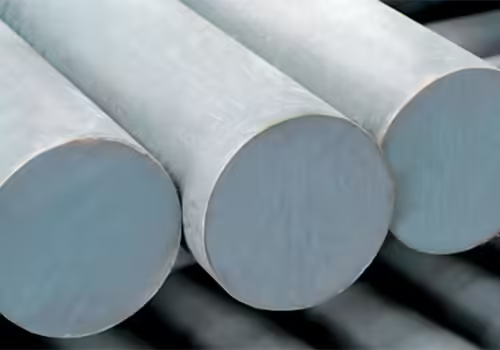
Tensile capacity means little without the ability to stretch before fracture. Standard carbon bars deliver elongation at break of 20–25 %, while low‑alloy seismic grades (for example HRB 500E) exceed 30 %. Such ductility allows beams, columns, and braces to deform plastically during earthquakes, dissipating energy and preventing sudden collapse.
Metallurgically, this property stems from balanced carbon (≈0.25 %) and carefully controlled additions of manganese, vanadium, or niobium. These elements refine grain size and suppress brittle phases. Even after cold bending into 135‑degree hooks or spiral ties with radii less than four bar diameters, the material retains its toughness and passes bend‑back tests without micro‑cracking.
On site, flexibility simplifies detailing. Tight corners, complex anchorages, or architectural curves can be shop‑bent rather than welded, cutting fabrication hours. Artists and sculptors likewise exploit this malleability—large outdoor installations are frequently formed from a single coil that twists and loops into intricate shapes without losing structural coherence.
Tensile capacity means little without the ability to stretch before fracture. Standard carbon rod steel delivers elongation at break of 20–25 %, while low‑alloy seismic grades (for example HRB 500E) exceed 30 %. Such ductility allows beams, columns, and braces to deform plastically during earthquakes, dissipating energy and preventing sudden collapse.
Metallurgically, this property stems from balanced carbon (≈0.25 %) and carefully controlled additions of manganese, vanadium, or niobium. These elements refine grain size and suppress brittle phases. Even after cold bending into 135‑degree hooks or spiral ties with radii less than four bar diameters, rod steel retains its toughness and passes bend‑back tests without micro‑cracking.
On site, flexibility simplifies detailing. Tight corners, complex anchorages, or architectural curves can be shop‑bent rather than welded, cutting fabrication hours. Artists and sculptors likewise exploit this malleability—large outdoor installations are frequently formed from a single coil of rod steel that twists and loops into intricate shapes without losing structural coherence.
Cost-Effective Material for Large-Scale Use
Affordability remains a decisive factor for contractors working on tight margins. On a dollars‑per‑megapascal basis, rod steel ranks among the most economical structural materials available. Commodity prices averaged USD 620 per metric ton in 2024—roughly one‑third the cost of stainless and one‑tenth that of carbon‑fiber strands with comparable strength.
Yet purchase price is only part of the equation. Life‑cycle assessments by the Steel Construction Institute show that after accounting for installation speed, reduced wastage, and scrap value recovered at decommissioning (often 90 % of the original mass), rod steel can cut total expenditure by 12–18 % versus alternatives such as cold‑drawn wire or glass‑fiber composite rebar.
Mass production and global availability further enhance cost efficiency. Continuous‑casting mills roll billets into coils or straight lengths with automated controls that maintain tight dimensional tolerances, reducing on‑site sorting and trimming. For mega‑projects like metro tunnels or LNG terminals, just‑in‑time deliveries of decoiled rod steel in compact bundles minimize lay‑down areas and crane cycles, translating direct cost savings into real schedule gains.
Corrosion Resistance and Longevity
While plain carbon rod steel will corrode if left unprotected, modern variants employ multiple defence mechanisms that dramatically extend service life. Hot‑dip galvanizing deposits a 70–100 µm zinc layer that offers sacrificial protection, delaying red‑rust formation by up to 40 years in ISO 12944 C3 urban environments. In chloride‑rich coastal zones, fusion‑bonded epoxy coatings reduce corrosion rates by an additional order of magnitude, preserving bond strength in bridge decks and wharves.
Stainless rod steel—typically grades 304L, 316L, or duplex 2205—adds chromium and molybdenum to form a self‑healing passive film. Though its upfront cost is higher, whole‑life analysis by Transport Canada indicates stainless rod steel halves maintenance outlays over a 75‑year design period for major crossings such as the Confederation Bridge.
Even uncoated rod steel benefits from concrete’s inherent alkalinity, but embedded cathodic protection or migrating corrosion inhibitors can be incorporated if pH drops over time. The result is a robust, low‑maintenance reinforcement strategy that supports sustainability targets by reducing replacement cycles and associated CO₂ emissions.
Wide Application Range
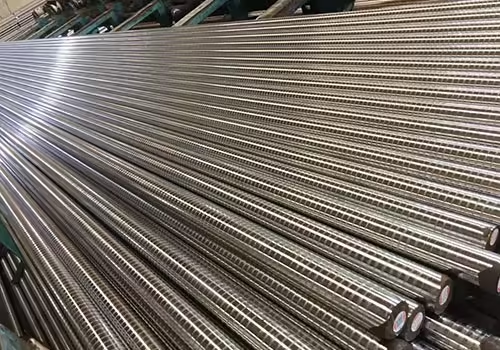
The adaptability of rod steel comes from its compatibility with a spectrum of manufacturing processes—rolling, forging, machining, welding, and even additive overlay. In the automotive sector it becomes torsion bars, stabilizer links, and steering tie‑rods. Agriculture relies on it for tillage tines, greenhouse frames, and vineyard trellises, while the energy industry uses high‑tensile rod steel tendons to anchor wind‑turbine masts rising more than 150 m.
Pre‑stressed tendons in railway sleepers and bridge girders leverage high‑carbon rod steel drawn to 1,860 MPa, whereas mild grades anchor curtain‑wall brackets without galvanic interaction with aluminium façades. The mining industry fashions drill rods and rock bolts from heat‑treated rod steel capable of withstanding both tensile and impact loading.
Beyond engineering, rod steel features prominently in contemporary public art. Anish Kapoor’s 115 m “Orbit” tower in London uses spiralling rod elements that serve both as structure and sculpture, illustrating how mechanical versatility can inspire aesthetics. Thanks to standardisation across ASTM, BS, JIS, and ISO specifications, rod steel is stocklisted worldwide in diameters from 6 to 50 mm—plain, ribbed, or coated—ensuring dependable supply chains even under fluctuating demand.
Comparative Table: Rod Steel Properties
The table below summarizes key properties of rod steel in different contexts:
| Property | Advantage | Application Area |
|---|---|---|
| Tensile Strength | Resists heavy loads | Infrastructure, Buildings |
| Ductility | Allows shaping without breaking | Earthquake Zones, Sculptures |
| Cost Efficiency | Lowers project costs | Construction, Manufacturing |
| Corrosion Resistance | Increases lifespan | Marine, Outdoor Installations |
| Versatility | Fits diverse use-cases | Automotive, Agriculture, Art |
| Availability | Easy sourcing in global markets | General Industry |
Conclusion
Rod steel stands out as a material that combines strength, flexibility, and affordability. Its proven advantages make it suitable for a wide range of applications, from heavy infrastructure to fine-detail metalwork. When choosing materials for long-term, high-stress projects, the performance metrics of rod steel make it a go-to choice for engineers, architects, and manufacturers alike.
As industries grow and standards evolve, the demand for reliable, multipurpose materials like rod steel will only increase. Understanding its core benefits ensures smarter investment and better project outcomes.
FAQ
What is rod steel commonly used for?
This material is widely utilized across numerous industries due to its strength, adaptability, and ease of processing. In construction, it’s a key component in reinforced concrete structures, forming the skeleton of buildings, bridges, and highways. Manufacturing sectors rely on it for producing tools, frames, machinery parts, and fasteners. In the automotive industry, it’s commonly shaped into suspension parts, axles, and engine components. Agricultural applications include fencing, support structures for crops, and equipment components. Artistic uses span sculpture, public installations, and architectural ornamentation, where its ductility allows for creative shaping without compromising durability. Its wide applicability stems from its ability to balance mechanical strength with workability across both functional and aesthetic projects.
Is rod steel the same as rebar?
Rod steel and rebar are closely related but not entirely interchangeable. Both are long, cylindrical steel products, but rebar (reinforcing bar) is engineered specifically for concrete reinforcement. Rebar typically features surface deformations—ridges, lugs, or spiral patterns—that improve bonding with concrete. Rod steel, on the other hand, may be plain or ribbed and is used for a broader array of structural and non-structural purposes. While rebar is a type of rod steel, not all rod steel is suitable or optimized for concrete reinforcement. The main distinctions lie in surface texture, grade specifications, and intended structural behavior under load and stress.
How is rod steel manufactured?
The production process primarily involves hot rolling, though cold drawing is also common for precision applications. It begins with billets—semi-finished steel products—heated to high temperatures and then passed through rolling mills that progressively reduce the diameter while elongating the material into long rods. For higher strength or finer tolerances, cold drawing may follow, where the product is pulled through dies at room temperature to refine dimensions and surface finish. Additional treatments such as quenching, tempering, or coating (e.g., galvanizing or epoxy application) can enhance corrosion resistance and mechanical properties, tailoring it to specific end-use conditions.
Can rod steel be recycled?
Yes, it is 100% recyclable and maintains its structural integrity through multiple recycling cycles. Scrap is collected, sorted, and melted in electric arc furnaces or basic oxygen furnaces, then reprocessed into new steel products, including rods. This recyclability not only conserves raw materials like iron ore and coal but also significantly reduces carbon emissions and energy consumption compared to producing virgin metal. Many infrastructure projects today specify recycled content in their sourcing, and this product fits easily into circular economy models that emphasize sustainability, cost savings, and environmental responsibility.
How do I choose the right grade?
Selecting the correct type depends on several factors: mechanical strength requirements, environmental exposure, fabrication methods, and compliance with building or industry standards. For structural applications in bridges or high-rise buildings, high-tensile grades like ASTM A615 Grade 60 or HRB 500E are preferred due to their strength and ductility. In contrast, mild steel grades are sufficient for general-purpose use, such as fences, gates, and non-load-bearing components. Coastal or chemically aggressive environments may necessitate corrosion-resistant options, including epoxy-coated or stainless steel variants. Always consider regulatory standards (such as ASTM, BS, or JIS), design loads, and long-term performance when making your selection.





